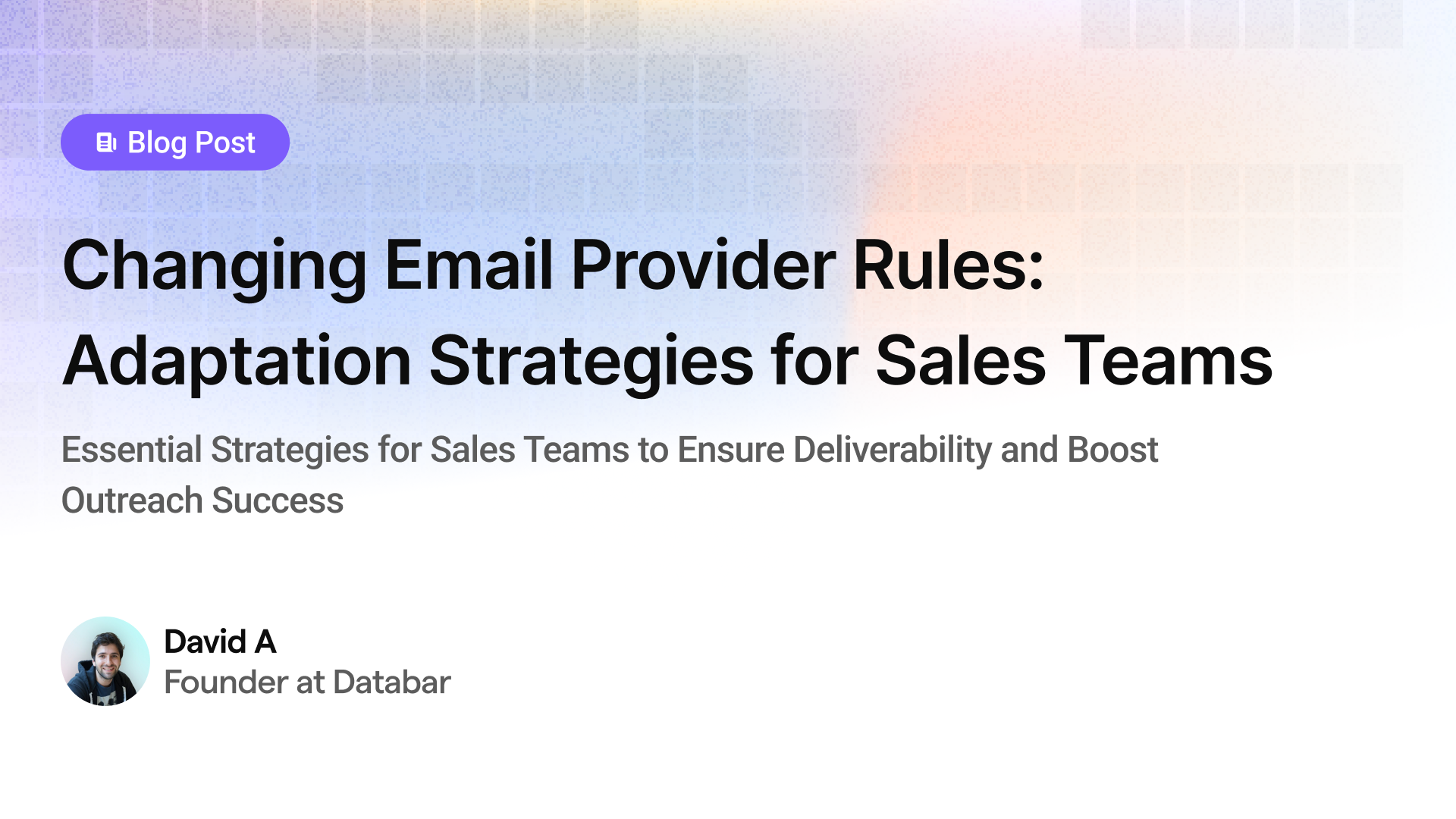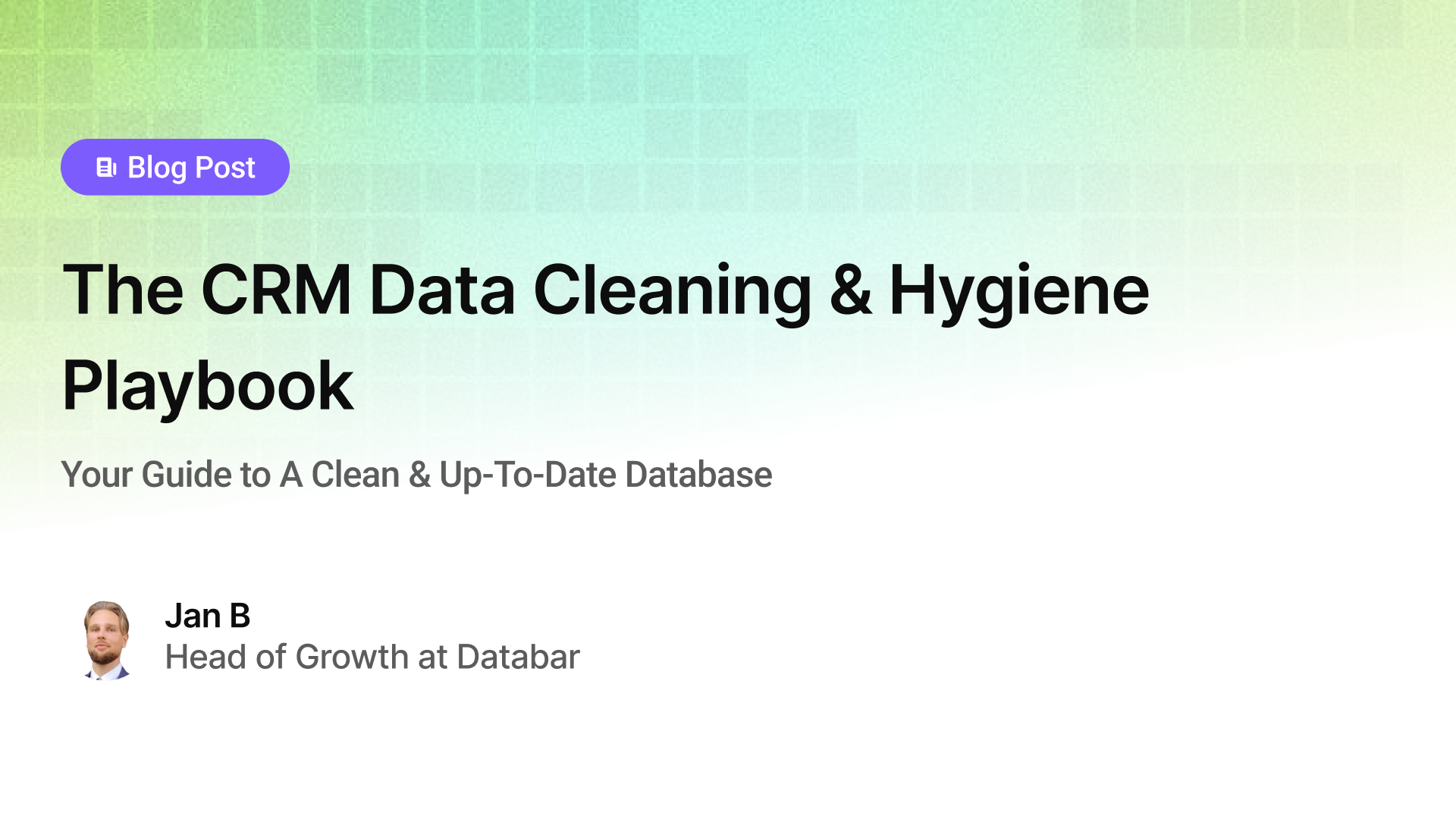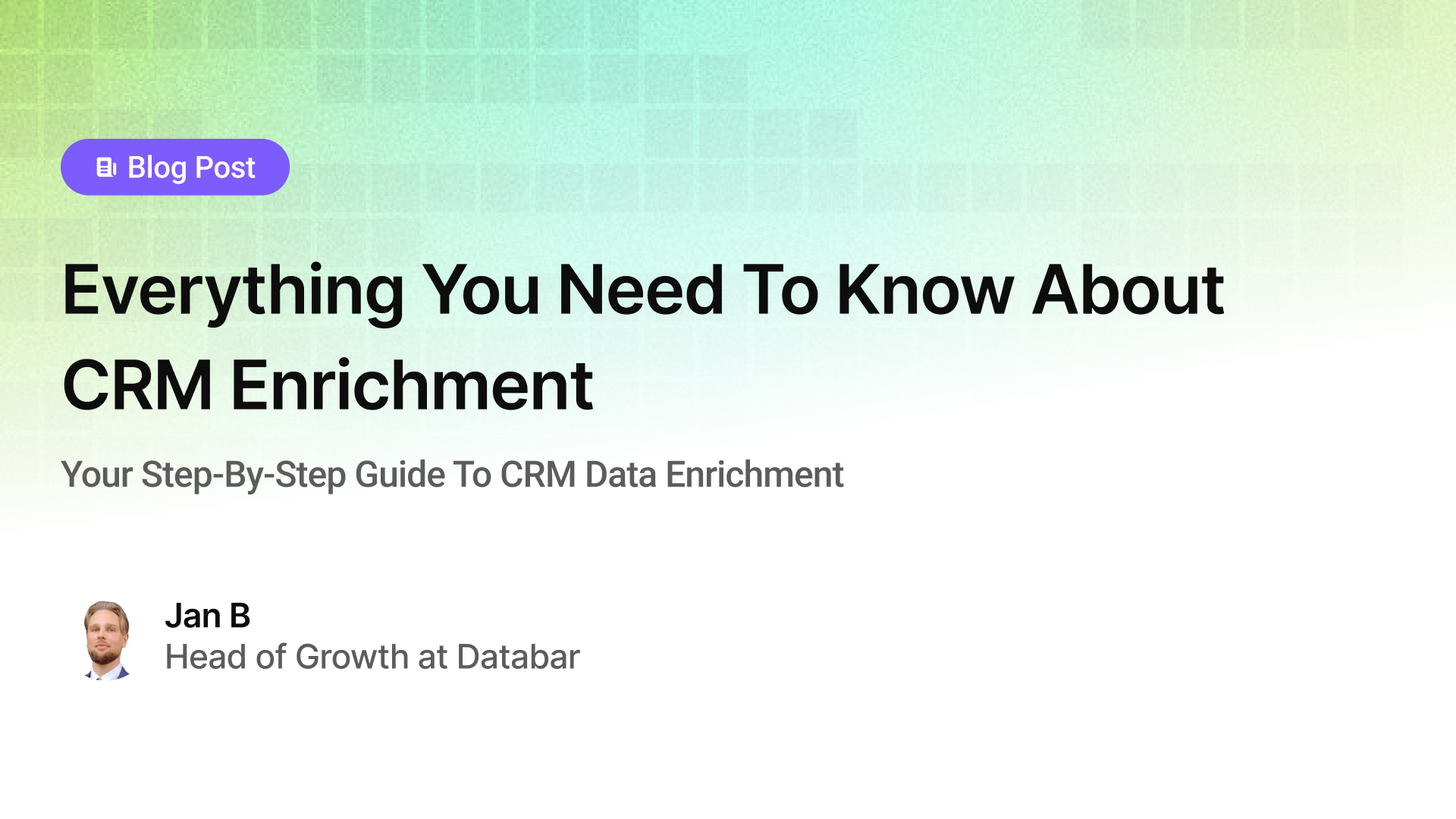Email Deliverability Requirements 2025: Microsoft, Google & Yahoo Compliance Guide
Essential Strategies for Sales Teams to Ensure Deliverability and Boost Outreach Success
Blogby JanMay 21, 2025

Email deliverability requirements have become dramatically more stringent, with some sales teams seeing inbox placement drop from 85% to under 40% in just six months. Microsoft's new enforcement rules, combined with Google and Yahoo's established requirements, are fundamentally reshaping how successful sales teams approach outreach.
For teams that rely on email outreach, the stakes couldn't be higher. Without proper adaptation to these email deliverability requirements, companies face deteriorating deliverability, declining response rates, and potentially devastating damage to their sender reputation. Yet beyond these immediate challenges lies opportunity – organizations that master compliance gain significant competitive advantage as others struggle with deliverability issues.
This guide examines the latest email authentication requirements, provides practical email deliverability best practices for maintaining compliance, and offers a roadmap for transforming these challenges into sustainable advantages.
Email Deliverability Requirements by Provider (Microsoft, Google, Yahoo)
The email deliverability requirements landscape has evolved dramatically with Microsoft's increasingly stringent requirements joining Google and Yahoo's established 2024 guidelines. Understanding these bulk email sender requirements is essential for maintaining effective outreach capabilities.
Microsoft's Outlook Email Authentication Requirements
Microsoft's latest email deliverability requirements for Outlook consumer domains (hotmail.com, live.com, outlook.com) establish strict requirements for bulk senders dispatching over 5,000 emails daily. These email sender authentication requirements include:
Implement authentication protocols: SPF, DKIM, and DMARC records are now mandatory for all sending domains.
Maintain functional reply-to addresses: Unlike some other providers, Microsoft specifically requires working reply addresses.
Keep spam complaint rates below 0.3%: Exceeding this spam complaint rate threshold triggers deliverability penalties.
Process unsubscribe requests promptly: Both header and message unsubscribe links must be honored within two days.
Most critically, Microsoft has announced a phased enforcement approach. As stated in their official documentation: "After May 5th, 2025, Outlook will begin routing messages from high-volume non‐compliant domains to the Junk folder... In the future (date to be announced), non-compliant messages will be rejected."
This transition from junk folder placement to outright rejection represents a significant escalation that sales teams must prepare for immediately.
Google and Yahoo's Email Deliverability Requirements
Google and Yahoo's email authentication requirements, implemented in early 2024, established the foundation that Microsoft now follows. These requirements have proven to be just the beginning of industry-wide changes. Key email deliverability requirements include:
Mandatory email authentication: DMARC SPF DKIM setup implementation.
One-click unsubscribe capabilities: Both header and in-message options.
Spam complaint thresholds of 0.1%: This spam complaint rate is a critical threshold to maintain good standing.
RFC 5322 formatting compliance: Proper message structure according to Internet standards.
These bulk email sender requirements apply to senders delivering more than 5,000 messages daily to Google or Yahoo domains – though as industry experts note, this threshold may decrease over time, affecting more organizations.
Practical Impact for Sales Teams
For sales organizations, these email deliverability requirements create several immediate challenges that demand strategic responses:
Domain and Infrastructure Burnout
Sales teams are experiencing accelerated burnout of sending domains and email infrastructure. Domain longevity has shrunk dramatically - what used to last 12 months now lasts 3-6 months, even with best practices. This accelerated burnout forces teams to constantly rebuild their sending infrastructure, creating operational disruption and additional costs.
Rising Implementation Costs
Compliance with these new email authentication requirements demands significant resource investment. The technical complexity and additional infrastructure needed have essentially increased costs three to four times what they used to be, according to industry specialists. Organizations must budget for additional domains, authentication setup, monitoring tools, and ongoing maintenance.
Increased Learning Curve
The technical sophistication required for proper compliance has created substantial operational complexity that is making the learning curve for cold email deliverability significantly harder than it used to be. This increased complexity makes self-implementation increasingly challenging for sales teams without dedicated technical resources.
These challenges require immediate strategic and tactical responses from sales organizations that depend on email outreach.
Email Deliverability Best Practices for 2025
Successfully navigating the evolving email deliverability requirements landscape requires a well-rounded approach that addresses both technical and strategic dimensions. The following email deliverability best practices provide a comprehensive framework for maintaining compliance while preserving outreach effectiveness.
1. Resilient Email Infrastructure
Building robust email infrastructure is foundational to sustained deliverability. This approach requires strategic planning and redundancy that goes beyond traditional setup approaches.
Domain and Account Redundancy
Establish significantly more sending capacity than your immediate needs require. Deliverability experts recommend purchasing 1.5 to 2 times as many domains and inboxes as you typically need, because it's not a matter of if your domains and inboxes will burn and all of your emails are going to go to spam, it's a matter of when.
This redundancy allows seamless transitions when primary sending domains experience deliverability challenges, avoiding the typical 2-4 week lag time when rebuilding infrastructure.
Domain Aging and Warmup Protocols
Despite recent debate about warmup practices, testing across hundreds of accounts indicates that proper warmup remains essential. Accounts that did have warmup started off with worse deliverability but that deliverability very quickly went up and stayed high. Accounts without warmup started off with better deliverability but very quickly went down.
This pattern occurs because warmup activities help build domain reputation that provides resilience against occasional deliverability challenges.
Infrastructure Isolation
Separate sending infrastructure by recipient domain type based on their security requirements. If you're reaching out to local service businesses, you don't need to complicate your setup with enterprise-level infrastructure. However, if you're reaching out to Enterprise organizations, they're going to have spam firewalls in place and you need different infrastructure designed for those environments.
This targeted approach maximizes inbox placement rates to specific recipient environments while minimizing cross-contamination risks.
2. Email Authentication Requirements Implementation
Proper email sender authentication has transitioned from best practice to mandatory requirement. Understanding and implementing these protocols correctly is essential for maintaining deliverability across all major providers.
SPF Record Implementation
Sender Policy Framework records specify which mail servers are authorized to send from your domain. For Microsoft compliance, implement records that:
- List all legitimate sending servers
- Include appropriate mechanisms (ip4, include, etc.)
- Avoid exceeding the 10 DNS lookup limit
- Use appropriate qualifiers (~all vs -all)
DKIM Signature Configuration
DomainKeys Identified Mail provides cryptographic verification of message integrity and sender. Proper DMARC SPF DKIM setup requires:
- Appropriate key length (2048-bit is now standard)
- Correct selector configuration
- Proper DNS record placement
- Regular key rotation schedules
DMARC Policy Establishment
Domain-based Message Authentication Reporting & Conformance ties these components together. Start with monitoring policies before enforcement:
- Begin with p=none to gather data without enforcement
- Configure rua tags for aggregate reporting
- Establish appropriate subdomain policies
- Plan phased progression toward stronger policies
While Microsoft doesn't currently require enforcement policies (p=quarantine or p=reject), their documentation suggests this may change in future updates.
3. Recipient-Focused Targeting
Beyond technical compliance, recipient-focused targeting has become essential for maintaining acceptable spam complaint rates. This shift represents a fundamental change in how successful sales teams approach prospecting.
List Quality Prioritization
The days of broad targeting with minimal filtering are definitively over. Traditional approaches where you could go on Apollo, ZoomInfo or any other data provider, just type in a couple of industry filters, export that list, plug it in your campaigns, and start ripping meetings no longer work effectively.
Instead, implement rigorous qualification processes that prioritize:
- Target fit verification through multiple data sources
- Behavioral indicators of potential interest
- Engagement recency and frequency metrics
- Relationship history and context
AI-Powered Qualification
Leverage AI tools for scalable list qualification that goes beyond basic demographic filtering. For example, Databar.ai's AI agent can automatically analyze company websites, recent news, and business context to determine prospect fit based on your specific criteria. This approach creates a systematic filter that removes poor-fit prospects before outreach begins, dramatically reducing spam complaint rate risks while improving response rates.
Sequence Shortening
Adapt sequence length based on engagement patterns observed across the industry. Sales teams should keep email sequences two to three steps maximum because 80% of positive responses come in emails one and email two, while 80% of spam reports come on emails three and four.
This data-driven approach maximizes response opportunity while minimizing complaint risk.
4. Email Reputation Management Systems
With provider focus on spam complaint rates, email reputation management becomes a critical operational function requiring systematic approaches. This ongoing process requires dedicated attention and systematic monitoring.
Spam Rate Monitoring
Implement comprehensive monitoring for spam complaints across providers:
- Register with Google Postmaster Tools for Gmail metrics
- Monitor Yahoo's Postmaster data when available
- Track Microsoft complaint metrics through sender tools
- Implement feedback loop processing where available
Establish alerting thresholds well below the 0.3% provider limit – typically at 0.1% – to enable proactive intervention before reputation damage occurs.
Engagement-Based Segmentation
Develop sophisticated engagement segmentation to protect sender reputation:
- Create tiered outreach approaches based on engagement history
- Implement automatic suppression for non-engaging segments
- Develop re-permission campaigns for declining engagement groups
- Build win-back strategies for previously engaged contacts
These email deliverability best practices maintain healthy engagement metrics that protect overall domain reputation.
Implementation Framework for Sustainable Compliance
Translating these email deliverability best practices into operational practices requires a systematic implementation framework with five key components. This framework ensures comprehensive compliance while maintaining operational efficiency.
1. Technical Implementation
Begin with comprehensive technical implementation of email authentication requirements:
- Deploy SPF records with appropriate scope and mechanisms
- Implement DKIM signing with proper key management
- Establish DMARC policies with reporting configuration
- Configure compliant unsubscribe mechanisms in both headers and message bodies
- Verify RFC 5322 formatting compliance
These technical foundations enable proper identification and processing of your messages by major providers.
2. Monitoring Infrastructure
Deploy comprehensive monitoring systems to track deliverability health across all major providers:
- Implement inbox placement rates testing across major providers
- Set up domain reputation tracking through provider tools
- Create spam complaint rate monitoring with alerting thresholds
- Establish engagement tracking for early warning detection
- Deploy bounce rate monitoring with automatic suppression
These systems provide early warning of potential issues before they impact campaign performance.
3. Targeting Evolution
Transform targeting approaches to focus on recipient relevance rather than volume metrics:
- Develop multi-factor qualification criteria beyond basic firmographics
- Implement AI-assisted qualification for scale and consistency
- Create enhanced suppression logic for non-relevant audiences
- Build intent-based targeting that identifies active buying signals
- Establish continuous list hygiene processes
This evolution maintains compliant spam complaint rates while improving response effectiveness.
4. Content Adaptation
Adapt content strategies to align with provider expectations and recipient preferences:
- Shift from frequency-based to value-based messaging
- Implement dynamic content that responds to engagement signals
- Develop mobile-optimized formats that improve user experience
- Create plain-text alternatives that avoid rendering issues
- Establish testing protocols for engagement optimization
These adaptations improve recipient experience while maintaining provider compliance.
5. Process Integration
Integrate compliance into standard operating procedures to ensure sustainability:
- Develop role-specific training for compliance requirements
- Create documentation for authentication maintenance
- Establish regular compliance review cadences
- Implement automated compliance verification for new domains
- Build cross-functional coordination between marketing, sales, and IT
This integration ensures sustainable compliance rather than one-time implementation.
How Databar.ai Supports Email Provider Rule Compliance Through Better Prospecting
While Databar.ai isn't an email deliverability platform, our comprehensive prospecting capabilities directly support compliance with evolving email deliverability requirements by addressing the root cause of deliverability issues: poor targeting and irrelevant outreach.
Enhanced List Quality Through Comprehensive Data
The foundation of email deliverability requirements compliance is sending relevant messages to qualified prospects. Databar.ai enables this through:
- Access to 90+ premium data providers for comprehensive prospect intelligence
- Advanced filtering and qualification capabilities that identify genuinely relevant prospects
- Real-time data enrichment that ensures contact accuracy and reduces bounce rates
- Intent signal identification that targets prospects with active buying signals
AI-Powered Prospect Qualification
Databar.ai's AI capabilities help maintain the low spam complaint rates required by email providers:
- Automated prospect scoring based on multiple qualification criteria
- AI-powered company analysis to identify true fit with your ideal customer profile
- Behavioral signal analysis that identifies prospects most likely to engage positively
- Custom qualification workflows that filter out poor-fit prospects before outreach
Improved Personalization at Scale
Email providers favor relevant, personalized content. Databar.ai enables this through:
- Comprehensive prospect research including recent news, LinkedIn activity, and company developments
- AI-generated personalization based on rich prospect context
- Technology stack analysis for relevant conversation starters
- Funding and growth signal identification for timely outreach
Data Quality That Reduces Technical Issues
Poor data quality creates deliverability problems through high bounce rates and invalid addresses. Databar.ai addresses this with:
- Email verification and validation across multiple providers
- Waterfall enrichment that finds accurate contact information
- Regular data updates that maintain list hygiene
- Comprehensive contact verification that reduces hard bounces
Integration That Maintains Compliance
Databar.ai integrates seamlessly with compliant email sending platforms:
- Direct integration with major email sequencing tools that implement proper authentication
- Clean data export that maintains formatting requirements
- CRM synchronization that supports engagement tracking
- Unified workflow that connects prospecting with compliant sending
By providing the high-quality, relevant prospect data that email providers reward, Databar.ai helps sales teams maintain compliance while actually improving outreach effectiveness. When you send relevant messages to qualified prospects using accurate contact information, you naturally achieve the low spam complaint rates and high engagement metrics that email providers require.
Conclusion: Mastering Email Deliverability Requirements for Competitive Advantage
The changing email deliverability requirements landscape creates fundamental challenges for sales organizations that rely on email outreach. Microsoft's strengthened rules, combined with Google and Yahoo's established requirements, demand comprehensive adaptation from sales teams. However, this transformation creates opportunities for organizations willing to invest in proper email deliverability best practices.
The organizations that will thrive in this new reality are those that transform their approach – implementing robust email authentication requirements, evolving their targeting strategies, and building sustainable compliance systems. While this transformation requires investment, it creates significant competitive advantage in an environment where many competitors will struggle with deliverability challenges.
The adaptations required aren't merely technical – they demand a fundamental shift in how sales teams approach prospect communication. By focusing on recipient value and relevance rather than volume and frequency, organizations can maintain compliant spam complaint rates while actually improving response effectiveness. This shift from quantity to quality represents the future of successful cold email deliverability.
The most successful teams will leverage integrated platforms like Databar.ai to enhance their prospecting capabilities while supporting email deliverability requirements. This approach transforms provider rule compliance from operational burden to strategic advantage – enabling sustained email effectiveness in the evolving deliverability landscape.
Organizations that master these email deliverability requirements today will establish market positions that become increasingly difficult for competitors to challenge as enforcement continues tightening across all major providers.
Ready to improve your email deliverability through better prospecting data? Start your free trial with Databar.ai to access the comprehensive prospect intelligence that naturally improves inbox placement rates and reduces spam complaint rates.
Related articles

Lead Scoring & Account Segmentation: Why Most CRMs Get This Backward (And How to Fix It)
How to build a system that tells your team who to call, when, and why
by Jan, October 06, 2025

Buying Signals & Intent Data: Why Your CRM Is Missing the 5 Accounts
Why Most Teams Miss Their Hottest Prospects (And How to Fix Your Signal Detection)
by Jan, October 06, 2025

The CRM Data Cleaning & Hygiene Playbook
Your Guide to A Clean & Up-To-Date Database
by Jan, October 04, 2025

Everything You Need To Know About CRM Enrichment
Your Step-By-Step Guide To CRM Data Enrichment
by Jan, October 03, 2025